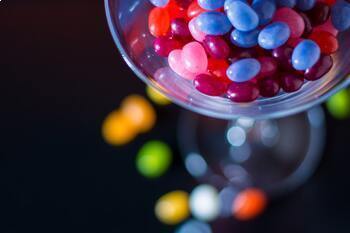Activity Estimation+Skill Building Measure Using Triple Beam Balance or Scale
- Google Slides™

Description
This stand alone ACTIVITY#3 of 6 gives students practice with estimation-and is useful skill building using a triple beam balance as a measuring tool. It can be used as an exploration, simple lab, experiment, or activity and can be altered for your use. The teacher provides each group with a container of different items (not specific-use what you have available) on their table.
Together, they will choose one or more items from the container to estimate (guess) which item(s) might be closest to the targeted mass given on a data table by using a triple beam balance or digital scale as a measuring tool. They can use a single item or mix and match items to reach your goals.
The slides needed to print as worksheets are simple black & white and can be altered.
The presentation consists of 7 slides including:
- 1 cover slide - can be shown on Smartboard or overhead and altered.
- 1 introduction slide that was included in the original presentation of 6 activities.
- 1 content slide on estimation with visual and examples on how to do the activity - Can be used to teach - show on Smartboard or overhead projector - good for teacher to review instructions for the activity. Simply delete or shrink the assess portion for the teacher on the bottom so they don't see it.
- 1 slide (worksheet side 1) asking for hypothesis (can change this word to "inquiry" to be more NGSS friendly) along with student directions and data table.
- 1 slide (worksheet side 2) with questions after activity completed (can change the word "questions" to "reflection" - and also has a conclusion area if you want to call this an experiment. Again, alter as you like.
- Last 2 slides are the conclusion from my original presentation along with an NGSS slide that has standards depending on your purposes in using the activity.
Additional materials needed: Container with mixed items of your choice for each table group
Extension: Can extend by using results in grams and having them convert to a different unit.


